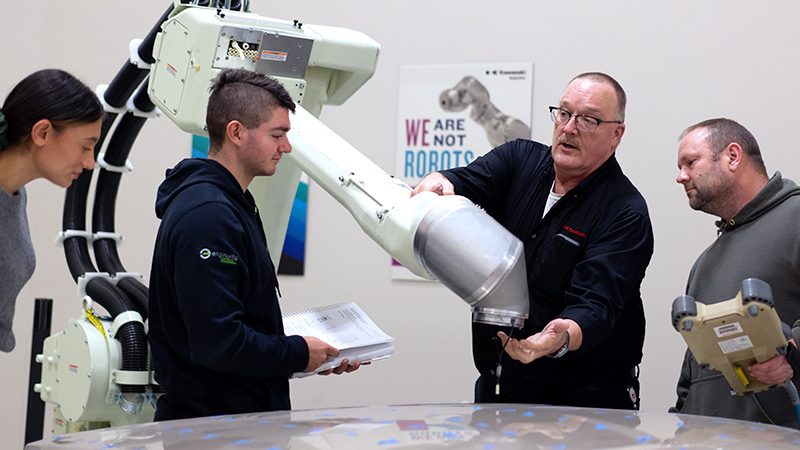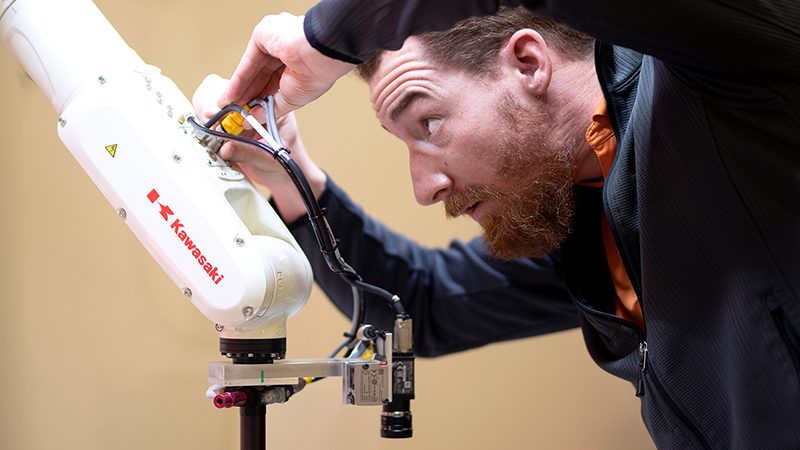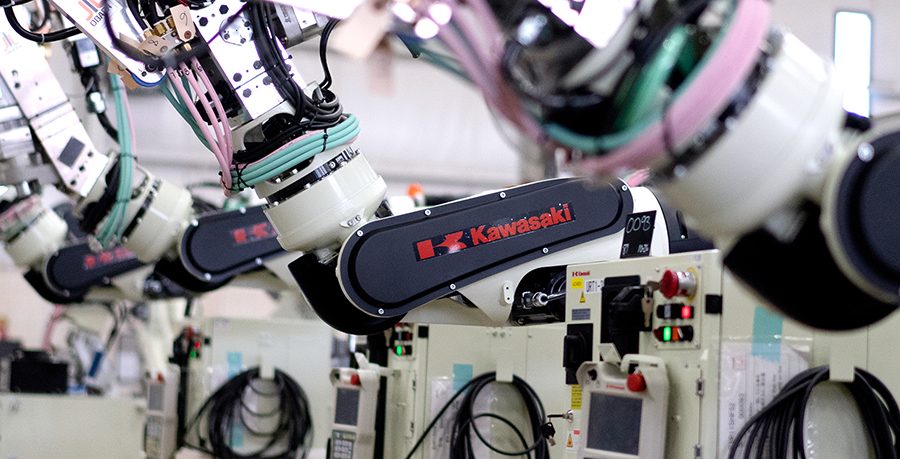By Zachary Thoma, Regional Sales Manager – Kawasaki Robotics (USA), Inc.
As I work for Kawasaki Robotics, I’ll simply say that if your robot spec is not Kawasaki, then the answer is yes. You can learn more about what makes us different here.
Now that that’s out of the way, this is a bit of a hot-button issue. Should you spec on a single robot for your facility automation? Do the benefits of a single-source strategy outweigh the risks?
It all starts with “standardization” – a buzzword of sorts if you ask me. At first glance it seems logical, right? Spec and standardize on one robot, standardize on your spare parts, standardize your training, standardize your pricing, standardize, standardize, standardize. While I am all for streamlining and simplifying, in this case I think companies can “standardize” themselves right into obsolescence.
I don’t say that without some consideration. I am all too familiar with the challenges of working with multiple vendors. However, I think that companies may not know the benefits of maintaining a strategy that includes more than one robot supplier.
Reasons why companies seek a single-source robot strategy
Before I get to that, let’s look at a couple of common reasons why companies are compelled to have only one robot brand in their facility. They want to…
- … Standardize parts and training
- … Leverage purchasing power with one partner
There are maybe some additional iterations of these reasons, but these cover the bulk of user motivations. However, it’s worth asking if these perceived benefits pay off in reality.
REASON NO. 1: Standardizing parts and training

Let’s take number one for example. It’s a simple idea and certainly one that holds merit: Standardize the product to minimize complexity. Keep it simple. While I can appreciate and agree with the spirit of this endeavor, I’m not sure it applies with robotics quite like it does with some other things. While robots can seem like they need a PhD to program, they really don’t. Regardless of what you might have heard, people don’t go to school to learn how to program a single brand of robot. They go to school to learn principles of robot programming and perhaps automation in general.
Learning how to use a specific robot manufacturer’s pendant or software is actually brand dependent, and that curriculum is generally supplied by the manufacturer themselves. Do you want to know how long it takes Kawasaki to teach someone who already knows the principles of robot programming how to use our robots? One week. Two tops. (You can learn more about our Training team here.) This doesn’t mean the programmer has experience, per se, but it does mean that good robot programmers can learn just about any robot. It’s not a years-long process to learn a new brand – it’s more like a week or two.
Is standardizing spare parts worth it?
Then there’s the parts discussion. While I can absolutely understand and agree that standardizing parts makes a great deal of sense, I’m not sure how well it applies here. For example, let’s say you have a fleet of 50 robots and you want to keep spare parts on hand to rebuild six of them at a time. What’s the difference in having parts from two separate robot types to rebuild three of each of them at a time?
Aren’t you in the same boat, only this time with some diversification? Plus, this strategy only works if your robot manufacturer doesn’t update their controllers and other parts regularly, making the old ones obsolete.

REASON NO. 2: Leveraging purchasing power with one partner
One can certainly make the case that leveraging your purchasing power is prudent. After all, why not? It’s not that this isn’t a good idea, I just don’t see why someone has to give up sound sourcing diversification to gain excellent pricing. There could be more savings to squeeze out, but when you factor in the other costs and/or risks, does it really pay off?
The short-term savings can be tempting, but they must be considered against the risk of having all your eggs in one basket. Plus, with a dual-robot strategy, you can keep your suppliers honest with more than just quoting around. You can actually, respectfully, be transparent about your options.
The risk of having all your eggs in one basket
For quite some time, people in supply management departments across the globe have pushed to have a diversified supply base. The reasons are obvious: Having a diversified supply base means safety. If one source struggles for any reason, or fails altogether, you have backup.
As a real-world example, some of our customers have let us know about extremely long robot lead times. Those that have a dual-robot strategy have benefited from having us as a partner, as our inventory has been well maintained. Those without a dual-robot approach have not fared as well. Kawasaki has manufactured industrial machines and vehicles since 1878, so we understand the importance of a robust and diverse inventory. Many are approaching us to get started on that dual-robot approach as a direct result of lessons learned from today’s volatile shipping environment.

So in the end, having a single-source robot solution just doesn’t make sense to me. Even in a competitive environment where it benefits me, I completely understand when the customer wants to pursue a dual-sourcing strategy.
Quite frankly, the challenge of having two different brands of parts just isn’t that big of a deal, and neither is the challenge of having people trained on two platforms. Quality programmers can switch between platforms, and they even enjoy some of the different perks or quirks that each system offers.
So particularly if you are a larger user, I can’t suggest enough that you consider adding a second robot manufacturer to your lineup if you’re currently set on one… Unless that one is Kawasaki, of course. 😊
Want to know more?
If you have any questions or would like to continue this conversation, feel free to shoot me an email.
Please note the views and opinions expressed in this blog belong exclusively to the content creator, not to Kawasaki Robotics as an organization. The content of this blog post or any user content it generates in no way convey the thoughts, sentiments or intents of the organization.